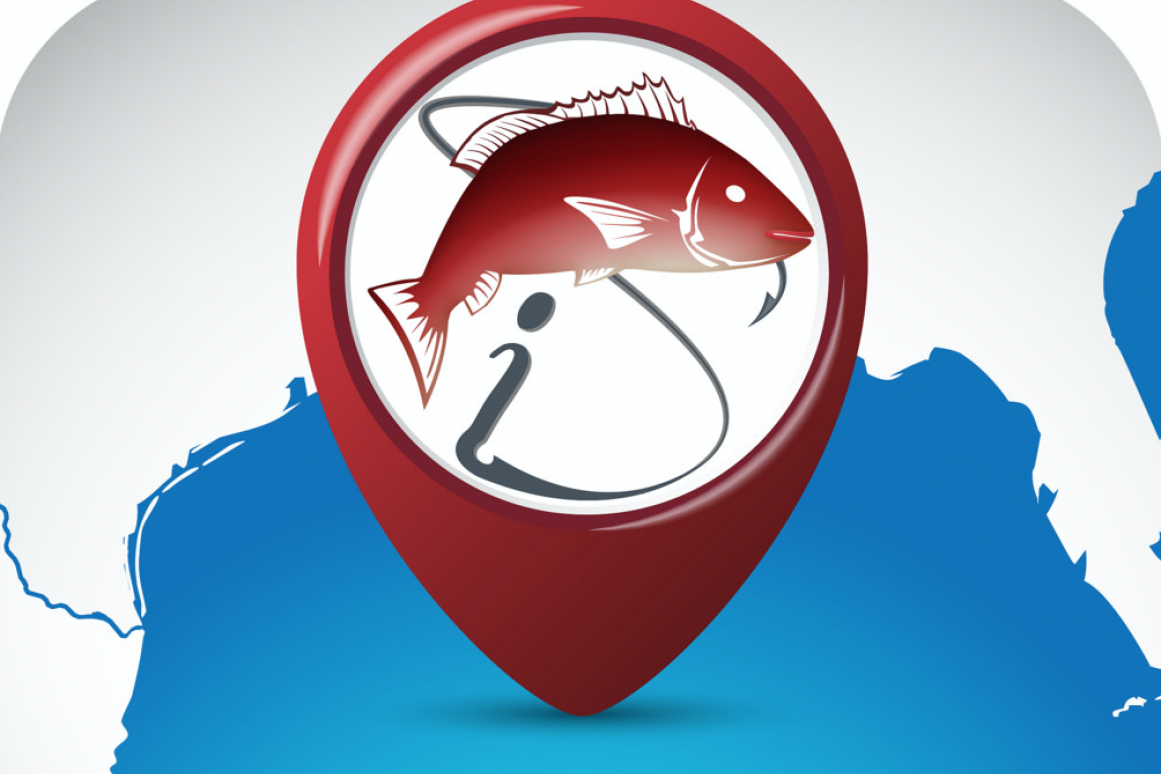Fishermen Can Make Their Catch Count for Red Snapper Fishery with iSnapper

CORPUS CHRISTI, Texas — With the announcement by federal fisheries officials that this summer’s federal recreational Gulf of Mexico Red Snapper season would be the shortest ever at just three days, fishermen are invited to join the effort to collect more robust catch data with the goal of providing a longer season through better science.
By downloading and using iSnapper, a mobile application created by the Center for Sportfish Science and Conservation (CSSC) at the Harte Research Institute (HRI) for Gulf of Mexico Studies, anglers can take an active role in helping to secure the long-term sustainability of this prized Gulf of Mexico fishery.
“Management is currently hindered by the lack of accurate and timely catch data for the private and for-hire recreational fishery,” said Dr. Greg Stunz, HRI Endowed Chair for Fisheries and Ocean Health and Director of the Center for Sportfish Science and Conservation “iSnapper represents an opportunity to improve data collection and recreational access to this fishery.”
The announcement of the three-day federal season, beginning June 1, troubled anglers and coastal community officials who have seen a recovery in the Red Snapper fishery and don’t understand why seasons keep getting shorter. Challenges with collecting accurate fisheries data during the short seasons is a major part of the problem, and iSnapper, available for iOS and Android, was launched in 2015 to give anglers an easy, secure method of reporting their catch, and provide researchers with access to timely, accurate data about what private recreational anglers are catching.
CSSC Research Specialist Tara Topping, who heads up the iSnapper project, said that Sportfish Center scientists are out in the field throughout the year sampling and work closely with fishermen, and they see what’s happening in the fishery.
“We understand the concern regarding the short federal season and we’re trying to provide anglers with a way to get involved with the data collection process in hopes of getting the most accurate data possible,” Topping said. “That will help in the long run with conserving and better managing in the fishery.”
Last year, despite some inclement weather at the beginning of the season, a total of 120 fishing trips were entered using iSnapper, with 1,238 Red Snapper reported harvested during the federal season. More than 600 anglers were reported as having fished for Red Snapper, with other popular species caught including King Mackerel and Cobia.
The app was designed with the angler in mind and is simple, fast, and easy to use on the go. After downloading and registering with iSnapper, anglers simply open a new trip and answer a few questions each time they head out on the water. It’s especially important for anglers to provide accurate vessel registration numbers during the registration process so that their data can be properly validated and recorded. Then, fishermen can put their phones away for the rest of their day. On the way back to the dock, they reopen iSnapper, record the number of fish harvested and released and give a general fishing location. Moments later the data is sent securely to researchers to generate catch statistics. The entry process takes a few short minutes.
In addition to capturing fisheries data, iSnapper allows you to save fishing photos, access local weather reports, view previous trips and share updates on social media.
Red Snapper is one of the most highly-targeted and controversial species in the northern Gulf. The species has been considered overfished since the 1980s, and anglers have seen a dramatic reduction in both the fishing season and bag limits in recent decades. But while the stock has been classified as overfished, fishermen are seeing more Red Snapper than ever, creating mistrust in the data that fishery managers are providing.
The ability to collect timely and accurate catch data from recreational fishermen is a major challenge to fisheries management, which is designed to keep fish populations stable and prevent overfishing that can diminish a species’ population. Because of these problems, the Red Snapper quota for the recreational sector includes a 20 percent buffer to ensure that quota is not exceeded, which would violate federal laws. With more accurate data sourced directly from fishermen in near-real time, this buffer could be reduced or even eliminated, allowing a greater amount of fish to be harvested.
The CSSC previously launched iSnapper as a pilot project with charter for-hire captains in 2011 to see if app technology could provide a faster and more accurate means of reporting catch. That app was an overwhelming success, and this new version of iSnapper opens the door to a much wider audience of recreational fishermen who want to aid in better fisheries management.
For more information visit iSnapper.org or the CSSC’s website, SportfishCenter.org.
